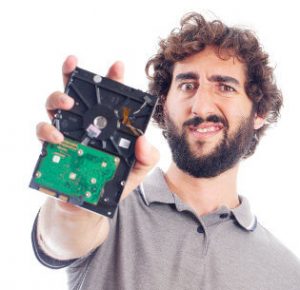If your computer identifies a hard drive (or other data storage device) as RAW, that means that the file system has become unreadable. The operating system cannot understand how the data is organized, so the drive is treated as unformatted.
A file system is a structure used by an operating system to control how data is read and written. Different operating systems support different file systems, but the most common include:
- NTFS (commonly associated with Windows)
- HFS and HFS+ (Mac OS)
- FAT (including FAT12, FAT16, and FAT 32)
- EXT2, EXT3, and EXT4 (Linux)
Think of the file system as a process for managing data. When you format a hard drive, you’re assigning it a file system — but if the file system becomes unreadable, there’s no process in place for data management.
Needless to say, if your hard drive reads as RAW, you won’t have access to your files. Here’s the good news: In most circumstances, the data is still recoverable.
Data Loss Scenarios That Might Cause File System Damage
So, why did your hard drive suddenly lose its file system?
 It’s impossible to say without a detailed evaluation (fortunately, Datarecovery.com provides free hard drive evaluations, and all of our services are supported by our no data, no charge guarantee — if we can’t recover your important files, you don’t pay for the attempt).
It’s impossible to say without a detailed evaluation (fortunately, Datarecovery.com provides free hard drive evaluations, and all of our services are supported by our no data, no charge guarantee — if we can’t recover your important files, you don’t pay for the attempt).
Some of the scenarios that can cause a hard drive to read as RAW include:
- Physical hard drive failures.
- Corruption caused by software issues or an unsafe shutdown.
- Accidental formatting.
- Virus or malware infection.
Of these scenarios, physical hard drive issues are the most common (and most likely, if the error occurred without interaction from the user).
Fixing a RAW Hard Drive and Recovering Data
When a hard drive or an HDD partition turns RAW, the data is usually still there; you just can’t see it, since the device is missing its file system.
If the drive has failed physically, it must be treated by professional data recovery technicians. The exact method of repair will vary depending on the scenario. For example, some drives may need an actuator head swap, while others may require firmware repair.
Your data recovery partner will need extensive knowledge and appropriate outfitting — in other words, your local computer shop probably won’t have the necessary resources.
If the drive has failed due to a logical (non-physical) issue, disk health utilities or data recovery software may restore the missing files. However, running software on a damaged hard drive can greatly reduce the chances of a successful recovery.
Why? File system corruption is often related to head alignment issues or firmware damage. If you tell your computer to repair the drive, the drive may mark good data as unreadable sectors — this greatly complicates the recovery process.
We strongly recommend seeking a professional evaluation. Generally, you’ll only get one chance to recover your files; if you use the wrong technique, the data loss may be uncorrectable.
If your drive is reading as RAW, Datarecovery.com can help. To discuss your hard drive failure with an expert, call us today at 1-800-237-4200 or schedule a risk-free evaluation online.





